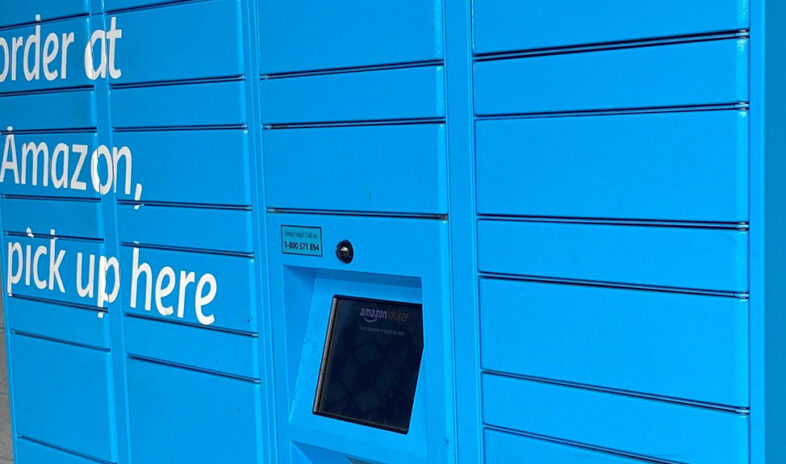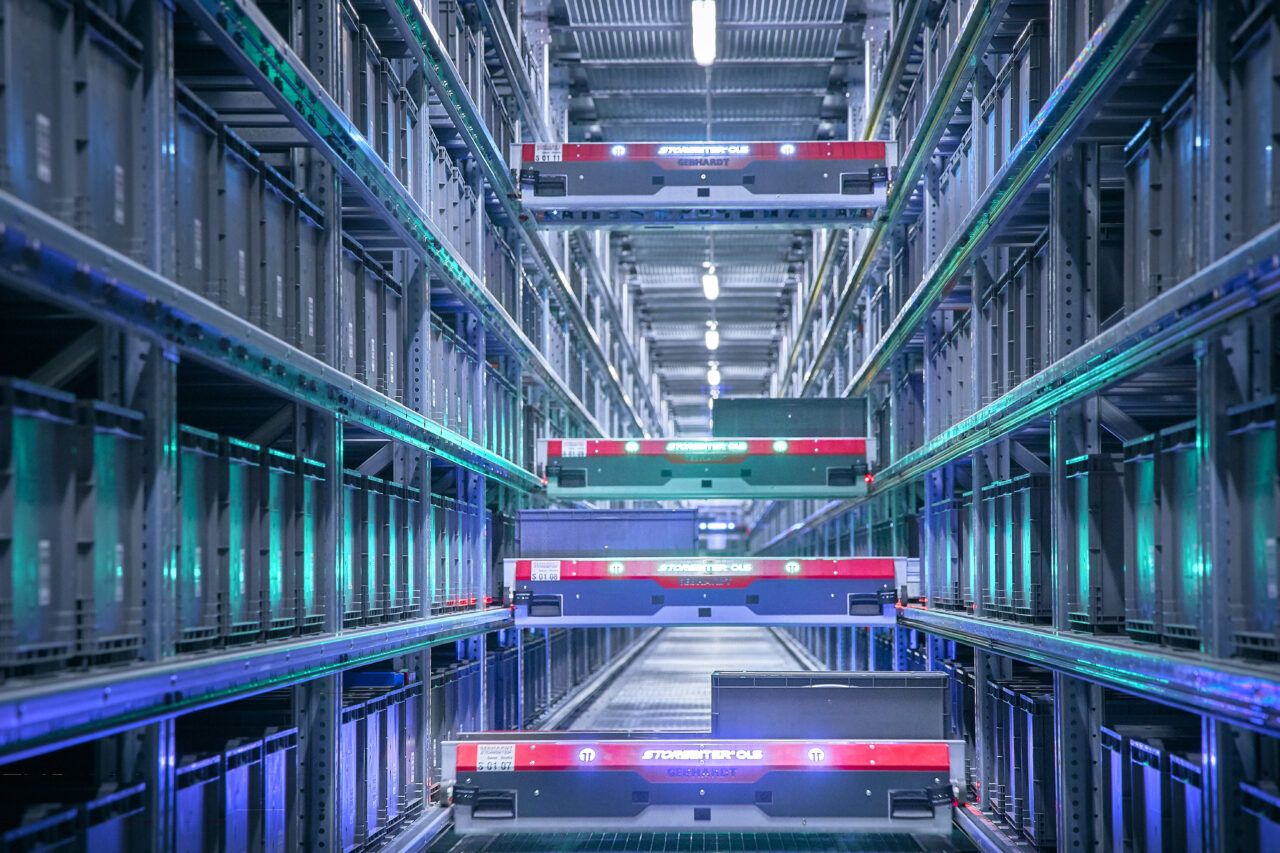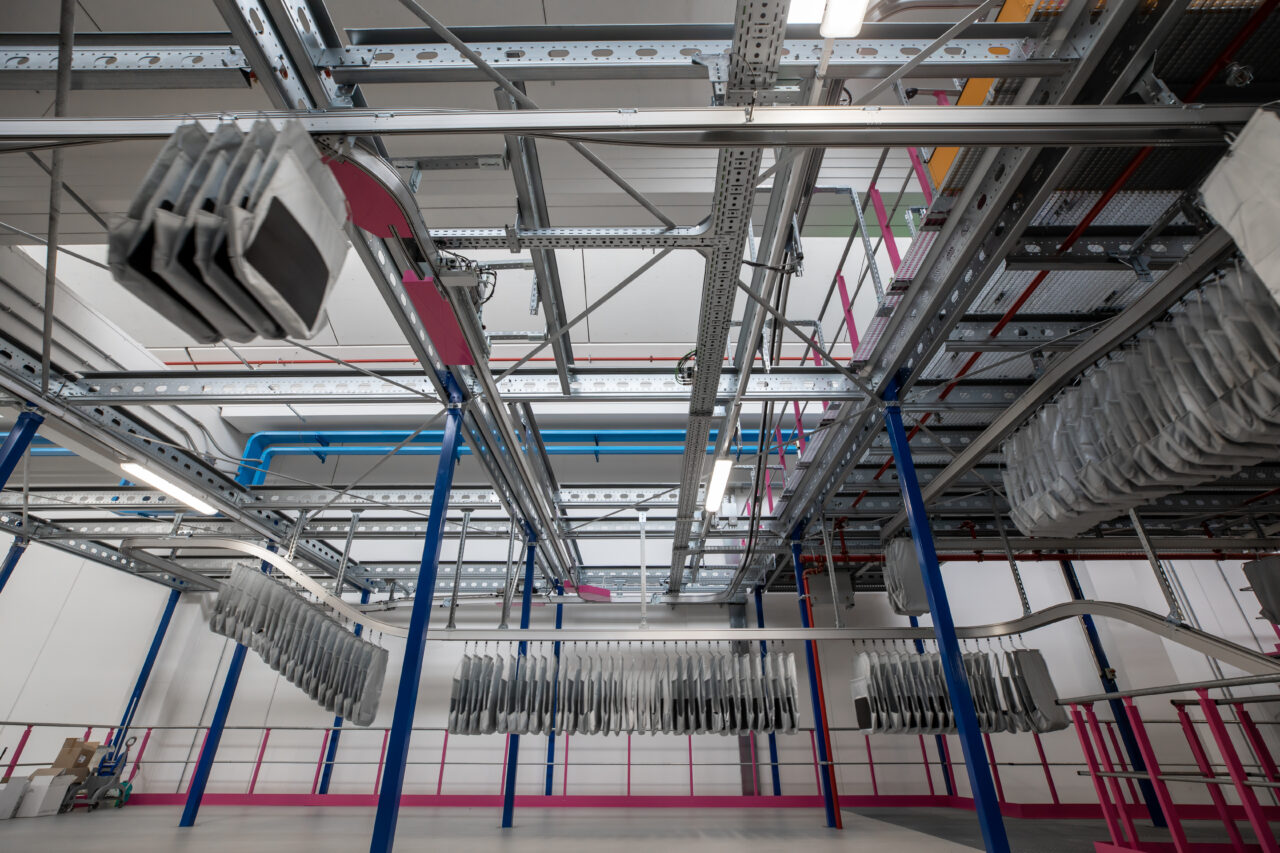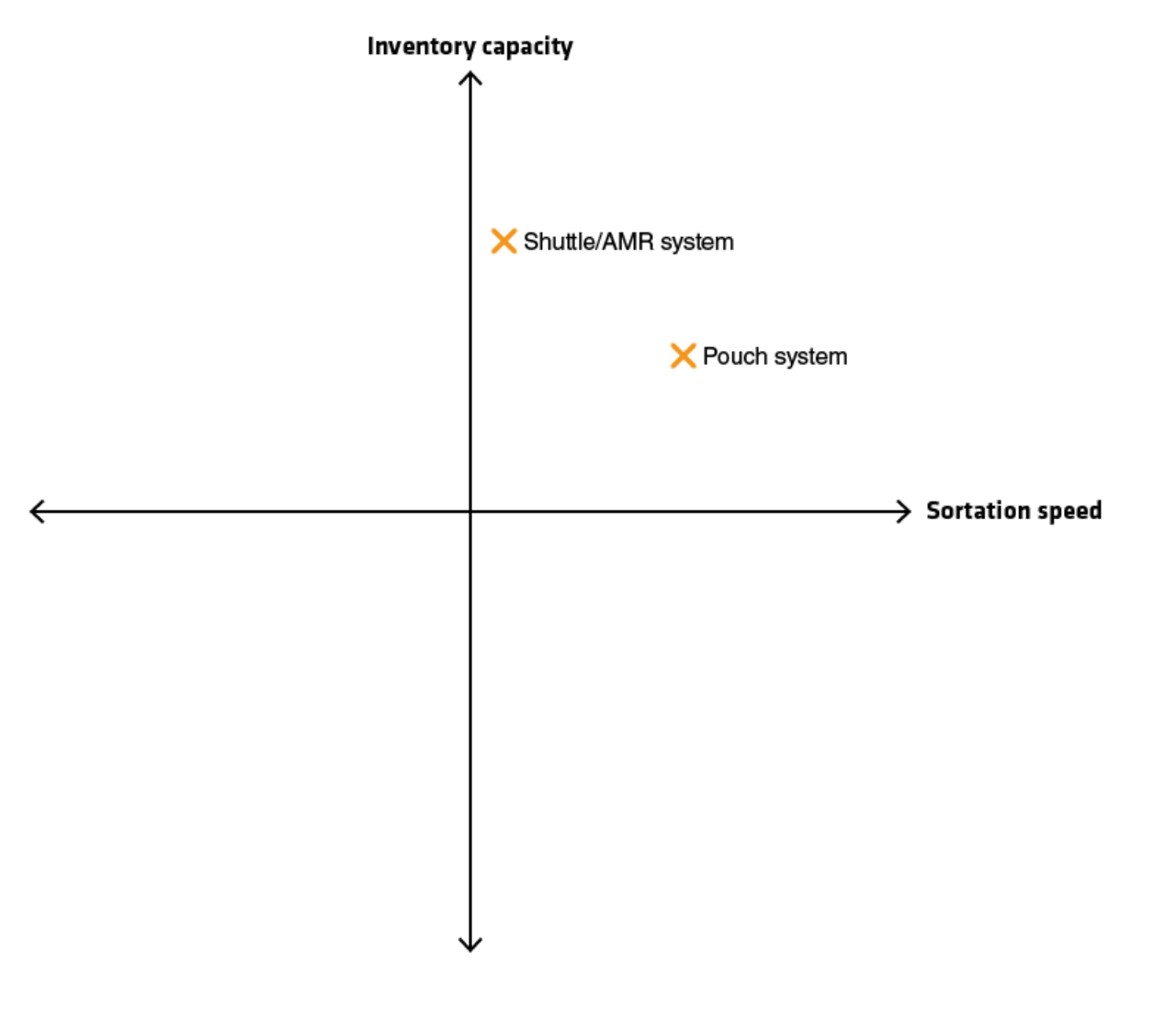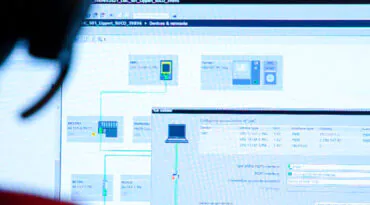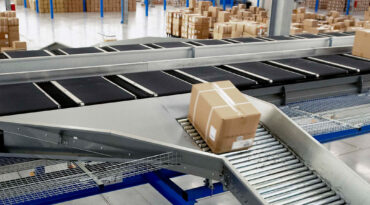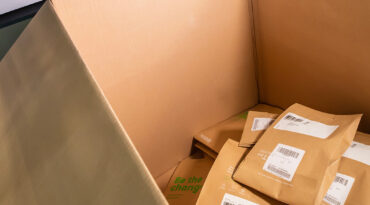The above graphic shows an easy comparison between the shuttle system and a pouch system.
A shuttle system is more inclined towards the inventory side, whereas a pouch is more inclined towards the sortation side.
It is also important to note that while the two technologies seem isolated and address different requirements, they can be highly complementary to each other.
So depending on requirements, GTP and pouch technology can be a perfect combination offering a solution with inventory storage, medium to high-speed sortation and sequencing.
Case Study: Consolidation buffer system using pouch technology as a complementary system to a GTP system
Requirements:
- An inventory buffer
- A GTP pick system
- A pick order consolidation system that can also act as a ship buffer with the ability to sequence and sort
- You want to make use of the space next to or above your shuttle system
Let’s imagine there is a fulfilment centre that caters to an omnichannel distribution set-up for an online sports apparel retailer. Orders are expected all day long and a consolidation of orders is needed per the locations or customers.
Imagine a customer orders several items – like some shoes, socks and T-shirts – and these orders arrive in different batches within a few hours but are to be shipped in the same shipment. Then imagine these items are located at different spots within the fulfilment centre OR they are stored in different bins in the GtP system.
During the order fulfilment process, the picker knows which items are needed for the order, but may not have access to all of the items at the same time. They pick an item into a shipping box and then have to wait for the other items to arrive or to be located.
Here is where a pouch set-up would be ideal. In this case, instead of waiting for the other items to be located or keeping the order box open, the picker picks from the GtP into a pouch system where the order is ‘parked’ until all other items are available or located.
In this case, the pouch is ideally functioning as an order consolidation buffer that can serve as a temporary inventory until the order is ready to be shipped. As the other items arrive, the pouch carrying the previous item can be called back and other items can be picked into the shipping box.
Additionally, if the items are to be picked in a certain sequence, each of the items for the order can be picked into the pouch system and later sequenced to be picked back into the shipping box. Here, the pouch would function as a sortation as well as a sequencing system.
A GtP system while acting as the main inventory system will serve well as a pick engine, but it will be an inefficient system to sort and sequence. A pouch attached to the GtP system will act as a complementary system adding the ability to sequence and sort.
This is an example of how the pouch brings the best from all processes and integrates with another system for an optimal operational performance.
Once the order is created in the fulfilment system, picked and shuttled to the pouch loading station, the SKUs will be loaded into/assigned to a pouch – in this case, it will be three pouches. While waiting for all three SKUs to be ready for order consolidation, the already ready SKUs will wait in the buffer storage.
Pouch system: Elegance in sequencing and sorting
While the above may be all you need, there is also a sequencing aspect that might be important for system performance – and customer satisfaction.
Imagine an order in which one SKU is fragile and must go into the box as the last item. Easy?
Yes!
But what if this is the case for 2,000-3,000 orders per day? How do you manage to buffer all these SKUs without losing control?
This is where the pouch can help.
Warehouse efficiency through digitalisation
The other aspect of an automated fulfilment set-up is the process of digitalisation.
By using a warehouse management system (WMS) or a warehouse control system (WCS), you are creating a digital footprint of the inventory enabling tracking and control. The basis of any operation improvement process is the ability to track, control and correct.
Deploying a WMS/WCS, you establish tracking; through data comes a new level of insight. As you track you can control, and as you control you can take corrective actions, which gives you the power to dramatically increase the operational efficiency and throughput.
TAKEAWAY
Combining pouch and shuttle systems provides a robust and adaptable solution for warehouses and distribution centres that need to manage both inventory and sortation processes efficiently. Shuttle systems are ideal for handling large-scale inventory, offering scalability and modularity, while pouch systems bring speed and flexibility to sortation, sequencing and order consolidation.
This combination ensures that operations can adapt to varying needs, including temporary inventory storage, returns processing and handling different SKUs. By leveraging both systems, businesses can optimise space usage – especially in high-ceiling buildings where vertical storage becomes crucial.
Furthermore, the pouch system’s ability to function as both a buffer and sortation engine complements the shuttle’s inventory management, making the overall set-up more efficient and future-proof. Additionally, the integration of digitalisation tools like WMS/WCS adds an extra layer of control and insight, enhancing the ability to track, manage, and adjust operations in real-time.


